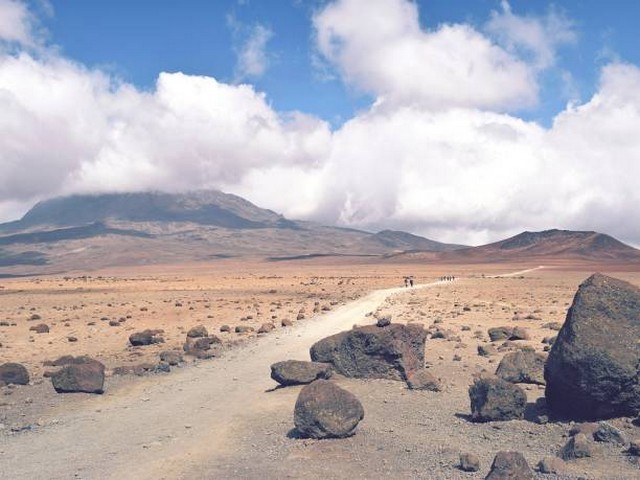How To Capture Kilimanjaro’s Changing Weather In Photos
Mount Kilimanjaro, a beacon of majesty towering over East Africa, is not only the highest peak on the continent but also a canvas of ever-changing climatic moods. At Kilimanjaro Centre for Trekking and Ecotourism (KCTE), we believe that every twist in Kilimanjaro’s weather tells a story, and capturing these moments in photos can create a mesmerizing narrative of your climb. This blog post explores how to harness the power of your lens to encapsulate the dynamic weather scenes of Kilimanjaro, turning fleeting moments into timeless memories.
Understanding Kilimanjaro’s Weather Patterns
Before you can capture the weather, understanding it is crucial. Kilimanjaro’s climate is influenced by its extreme altitude, which spans from tropical to arctic. As you ascend, you traverse through five distinct ecological zones – each with its own weather patterns.
The Rainforest Zone
Lush and often wet, this zone offers misty landscapes and rain-soaked flora. Early mornings are ideal for capturing soft, diffused light filtering through dense foliage.
The Heath and Moorland
This zone features dramatic temperature swings and rolling clouds. Photograph during the golden hours of sunrise and sunset when shadows and light dance across the landscape.
The Alpine Desert
Sparse vegetation and wide, open skies dominate this area. The clarity of the sky at night makes it perfect for astrophotography, capturing star trails over the silent mountain.
The Arctic Zone
The summit area is where the weather can be most unpredictable, with clear skies turning into snowstorms rapidly. Capturing this zone requires readiness to snap quick shots as conditions change.
Tips for Photographing Kilimanjaro’s Weather
Choose the Right Equipment
- Camera with Manual Settings: Adjust exposure, ISO, and shutter speed to suit rapidly changing light conditions.
- Lenses: A wide-angle lens for landscapes, a fast lens for low light, and a telephoto lens for distant details.
- Protection: Waterproof bags and silica gel packs to protect from moisture and fogging.
Best Times to Capture
- Golden Hours: Just after sunrise and before sunset, the light brings out the textures and colors of Kilimanjaro’s landscapes.
- Blue Hour: The brief period before sunrise and after sunset offers a mystical light, perfect for capturing eerie and soft scenes.
- Storm Approaching: Cloud formations and lighting can be dramatic. Ensure you’re safe, but ready to capture the onset of storms.
Composition Techniques
- Rule of Thirds: Place points of interest along the intersections of your frame divided into thirds to create a balanced image.
- Leading Lines: Use paths, streams, or ridgelines to guide the eye through the photo.
- Framing: Use natural elements like tree branches or rock formations to frame your main subject, adding depth and interest.
Safety and Ethical Considerations
While chasing the perfect shot, remember that Kilimanjaro is a challenging environment:
- Stay Aware of the Weather: Conditions can change rapidly; always prioritize safety.
- Respect the Environment: Stick to trails and minimize your ecological impact.
Join the Adventure with KCTE
Ready to take your photography to new heights? Book your Kilimanjaro climbing experience with Kilimanjaro Centre for Trekking and Ecotourism (KCTE). Our expert guides not only ensure your safety but also help in identifying the best spots and times for unforgettable photographs.
Capturing Kilimanjaro’s Night Skies
Don’t retire your camera after sunset. Kilimanjaro’s high altitude and remote location make it an ideal spot for capturing celestial events and the Milky Way’s core:
- Use a Tripod: Essential for long exposures to avoid blurry images.
- High ISO Settings: Allows more light to hit your camera sensor, capturing more details of the night sky.
- Wide Aperture: Lets in as much light as possible.
Editing Your Photos
Post-processing is a powerful tool to bring out the details and enhance the mood of your Kilimanjaro weather photos:
- Adjusting Contrast and Saturation: Highlight the vibrant colors of the sky and landscapes.
- Sharpening Details: Emphasize textures like clouds, rocks, and ice.
- HDR Techniques: Blend multiple exposures to capture the widest range of light and dark from high contrast scenes.
FAQs About Photographing Kilimanjaro
What is the best month to capture Kilimanjaro’s weather in photos?
The best months are January, February, and September when the weather is clearest, though dramatic weather photos can be captured year-round.
How can I protect my camera from cold and moisture?
Use weather-sealed camera bodies and lenses, carry multiple layers of protection like plastic bags and desiccants, and keep your batteries warm close to your body.
Can beginners in photography do well in capturing Kilimanjaro’s landscapes?
Absolutely! KCTE guides include basic photography tips and can help you set up your shots effectively. Moreover, the natural beauty of Kilimanjaro does a lot of the work!
Capture the Climatic Majesty of Kilimanjaro with KCTE
Every weather pattern over Kilimanjaro speaks to the heart of those who tread its paths. With your camera in hand and the spirit of adventure in your soul, join us at Kilimanjaro Centre for Trekking and Ecotourism (KCTE) to capture these moments. Whether you’re a seasoned photographer or a passionate beginner, Kilimanjaro awaits to unfold its stories through your lens. Book your journey today and tell the story of Kilimanjaro through your eyes.
Embrace the challenge, capture the beauty, and live the adventure with KCTE. Your journey to the roof of Africa starts here!




